By Valerie Seiber
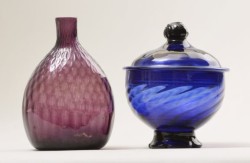
The Hershey Story is fortunate to contain a variety of artifacts related to the life of Henry William Stiegel. Stiegel was an intriguing and ambitious figure who lived in colonial Pennsylvania. Born near Cologne, Germany in 1729, Stiegel immigrated to Philadelphia in 1750.

After two years, he obtained work as a clerk at an iron furnace in Lancaster County, Pennsylvania. Shortly thereafter he married Elizabeth Huber, the ironmaster’s daughter. Within a few years Stiegel, with the help of investors, owned and operated Elizabeth Furnace which made kettles, pans and sugar boiling equipment. Yet it was cast iron stoves for which Stiegel was best known. He acquired another iron forge and several hundred acres of land to support the operations at Elizabeth Furnace.
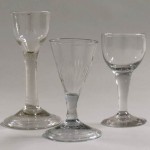
Once a successful ironmaster, Stiegel turned his attention to another industry – glass making. At the time, the majority of glassware was imported to the colonies and priced so high that it was considered a luxury item. After a trial period of glass blowing at Elizabeth Furnace, Stiegel founded the American Flint Glass Manufactory near Manheim, Pennsylvania in 1765. Initially, the firm made utilitarian bottles and window glass.
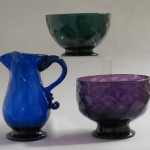
Later the factory produced blown glass tableware including wine glasses, cream pitchers, salt dishes and sugar bowls all in vibrant colors of blue, green and purple. Stiegel hired skilled workers for his glass making operation. The Hershey Story collection contains a handwritten one-year contract between Henry William Stiegel and Lazarus Isaac dated 1773. Isaac is described as a glass “cutter and flowerer” from Philadelphia and was paid five pounds, ten shillings each month.
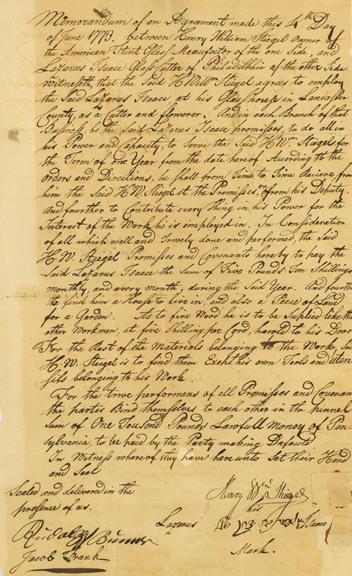
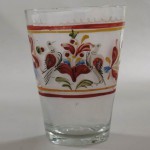
In addition to the colored glass, many wares produced at the American Flint Glass Manufactory had cut or etched decorations while others were hand painted with traditional Pennsylvania German motifs in red, blue and yellow.
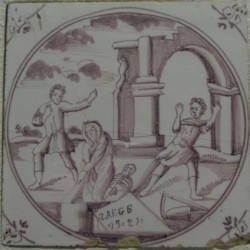
Stiegel’s wealth provided him with the means to construct a brick mansion in Manheim and furnish it with a lavish interior. He held Lutheran services on the second floor chapel. Imported Delft tiles, depicting various Biblical scenes, surrounded the fireplace.Two large painted wall-hangings, which featured a hunting party on horseback, graced the ballroom walls. He loved music and purchased several instruments including a harpsichord. His loyal employees played the instruments for their master’s enjoyment upon a roof-top balcony. According to folklore, Stiegel erected a tower and placed a cannon on top. The cannon was supposedly fired to welcome him home after extended periods of travel.
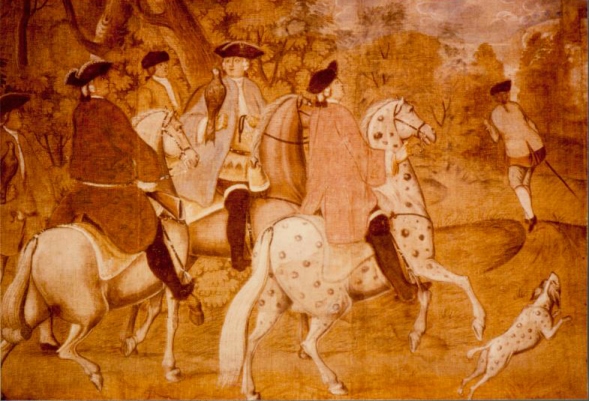
Economic conditions were uncertain after the French and Indian War and the British colonies were growing restless. Stiegel acquired large amounts of real estate surrounding his home, glass factory and iron furnace, totaling over 14,000 acres in all. This, combined with his lavish lifestyle, meant he was unable to repay his partners and investors. Selling his property and possessions was not enough and he was ultimately thrown into debtor’s prison in late 1774.

Released by an order of the Colonial Assembly, Stiegel relied upon his relatives for support and worked as the book keeper at Elizabeth Furnace, then owned by his nephew, and later as a school teacher. Henry William Stiegel was never able to recover from his indebtedness and died a pauper on January 10, 1785.
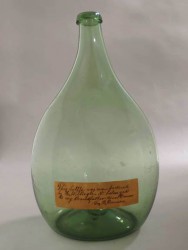
It is thanks to George Danner an antiques collector and dry goods merchant from Manheim, Pennsylvania (a town founded by Stiegel) that these artifacts related to the life of Henry William Stiegel were preserved. After Danner’s death his collection was sold to Milton S. Hershey. The Danner Collection, along with the American Indian Collection, formed the core holdings of the Hershey Museum in 1936. The Hershey Story still maintains both of these important collections today.


